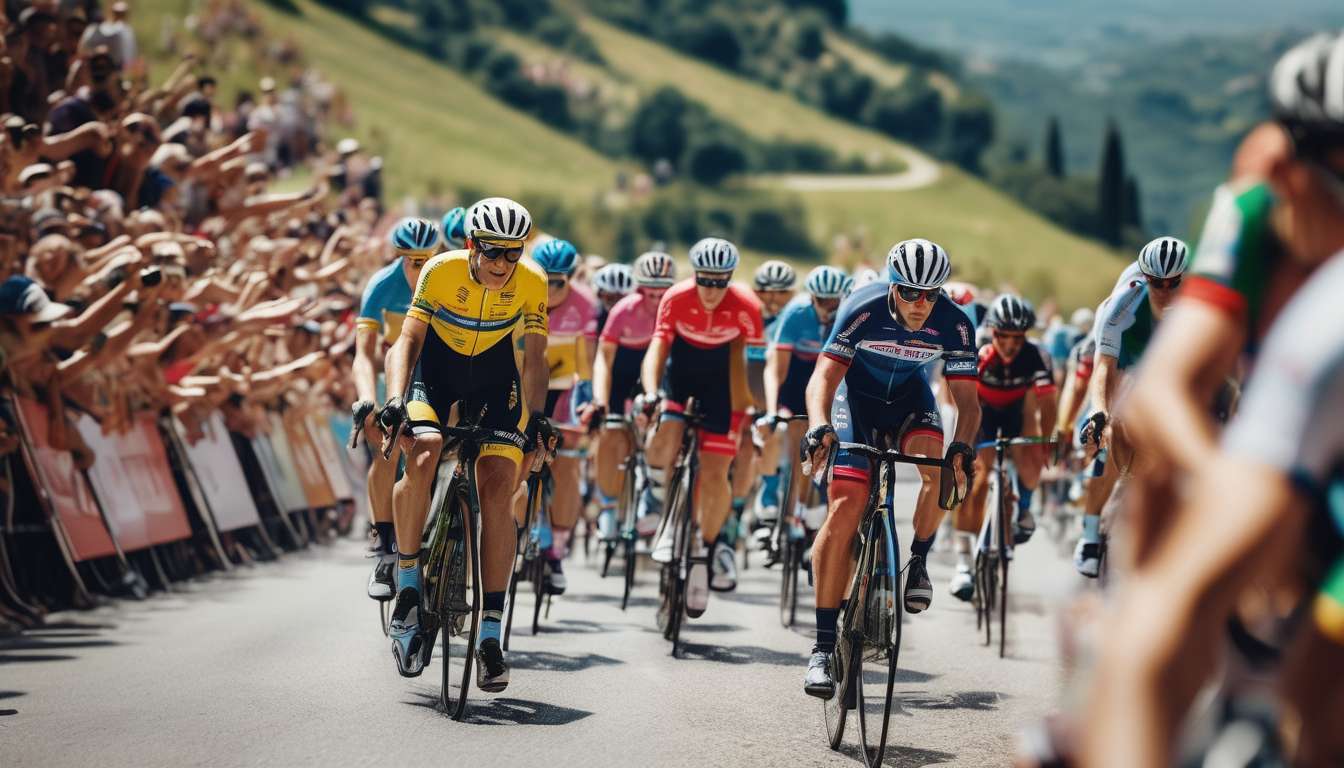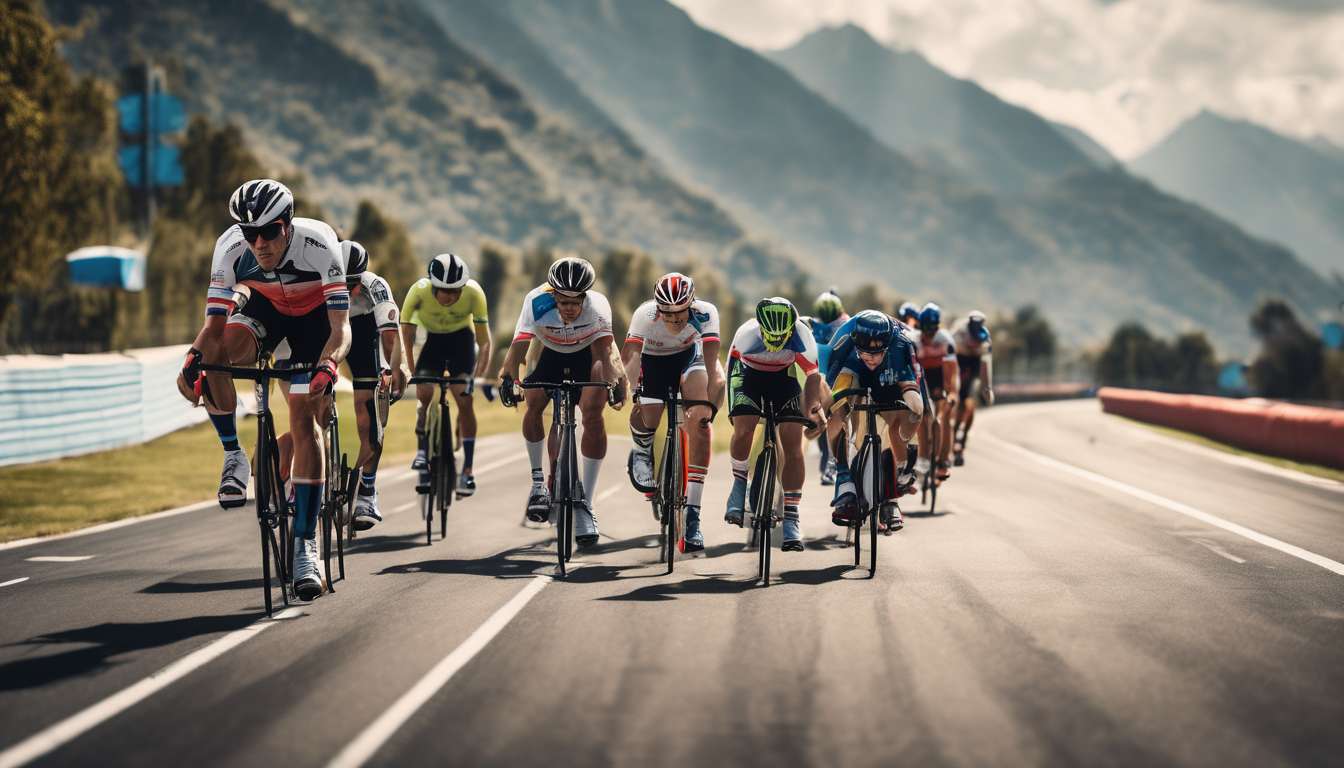As avid cycling enthusiasts and analysts, we have always been captivated by the intricate data that underpins every race. The thrill of watching a peloton weave through challenging terrains is only matched by the excitement of decoding the numbers that tell the story behind the scenes.
In our journey to understand cycling race analytics, we have uncovered a plethora of proven methods that transform raw data into insightful narratives. Together, we delve into the nuances of:
- Power meters
- Heart rate monitors
- GPS trackers
These tools help us uncover patterns that reveal a rider’s strategy and stamina. Our collective goal is to equip fellow aficionados with the tools to interpret these metrics effectively.
By demystifying complex algorithms and sharing practical techniques, we aim to enhance our appreciation of this dynamic sport. Join us as we explore the world of cycling race analytics, where data meets passion and every number has a tale to tell.
Understanding Power Meters
Power meters are essential tools for cyclists to measure their output and enhance their performance. When we ride, it’s not just about feeling the wind rush past; it’s about understanding how our effort translates to performance.
With power meters, we can gauge the exact wattage we’re putting into our pedals. This precise data allows us to tailor our training, pushing us toward our goals with clearer insight. Unlike heart rate, which can be influenced by many factors, the power meter provides immediate feedback on our effort level.
As a community of cyclists, we often share our rides and achievements. GPS tracking enables us to connect and compare with fellow riders, making our journey feel like a collective adventure.
Power meters, coupled with GPS, offer a complete picture of our rides. We can analyze:
- Our routes
- Elevation changes
- Power outputs
Together, these tools create a supportive network, encouraging us to improve and celebrate our progress.
Interpreting Heart Rate Data
Understanding our heart rate data adds another layer to how we interpret our cycling performance. As a community of cyclists, we’re not just looking at numbers; we’re connecting them to our shared experience and goals. By analyzing our heart rate, we gain insights into how our bodies respond under different conditions.
While power meters tell us what we’re doing, heart rate reveals how we’re feeling about it. This dual approach helps us gauge our effort and endurance, enhancing our strategy.
When we merge heart rate metrics with data from power meters, we see a fuller picture of our performance. For instance:
- During a race, if our power output is steady but heart rate spikes, it might signal fatigue or stress.
- By staying aware of these patterns, we can adjust our training for better efficiency.
Although GPS tracking provides location and speed, heart rate data dives deeper into our physiological responses, fostering a sense of unity in our pursuit of excellence.
Analyzing GPS Tracking Insights
By examining our GPS data, we can pinpoint exactly where and when our performance peaks and dips occur during a race. This analysis brings us closer as a community, sharing insights that elevate our collective experience.
GPS tracking offers precise location data, helping us correlate terrain with fluctuations in our performance. When we overlay this with power meter readings, we gain a comprehensive view of how each section of the course impacts our output.
Heart rate data complements GPS insights, unveiling how our bodies respond to different segments. Together, these metrics allow us to strategize better, identifying moments where we might need to conserve energy or push harder. It’s like having a roadmap of our strengths and weaknesses that we can share with one another.
By discussing these insights, we foster a deeper connection with fellow cyclists, creating a supportive environment where we all strive to improve.
Let’s continue to leverage these tools and grow together, one pedal stroke at a time.
Utilizing Cadence Metrics
Cadence Metrics and Pedaling Efficiency
Cadence metrics provide valuable insights into our pedaling efficiency and help optimize our riding technique. When we examine cadence, we’re looking at how many pedal revolutions we make per minute.
This data, combined with readings from:
- Power meters
- Heart rate monitors
gives us a comprehensive view of our cycling performance. We can identify if our cadence is too high or too low and adjust to find that sweet spot where our power output is maximized without overexerting ourselves.
Integration with GPS Tracking
In our cycling community, understanding how our cadence integrates with GPS tracking data creates a fuller picture of our performance across various terrains.
Whether we’re:
- Climbing steep hills
- Cruising flat roads
maintaining an optimal cadence helps in conserving energy while keeping pace with our group.
Benefits of Analyzing Cadence
By continuously analyzing and adapting our cadence, we not only improve individually but also contribute to a stronger, more cohesive team dynamic.
Let’s embrace these metrics to ride smarter and stronger together.
Deciphering Energy Expenditure
Analyzing Energy Expenditure
By analyzing our energy expenditure, we can better understand how different cycling conditions impact our endurance and performance.
Power Meters
With tools like power meters, we’re able to quantify the effort we put into pedaling. These meters provide:
- Insightful data on how much energy we’re using
- A clear picture of our power output
This allows us to adjust our training to optimize efficiency.
Heart Rate Monitoring
Let’s not overlook heart rate monitoring. Our heart rate reflects how hard our body is working. By tracking it, we can:
- Identify when we’re exerting too much or too little effort
- Maintain a sustainable pace
This is especially beneficial in group rides where we strive to stay in sync with fellow cyclists.
GPS Tracking
Moreover, GPS tracking adds another layer of depth by mapping our routes and terrain changes. This allows us to:
- Analyze how different elevations and distances affect our energy levels
Enhancing Cycling Experience
By working together with these tools—power meters, heart rate monitors, and GPS tracking—we can enhance our collective cycling experience and sense of community.
Exploring Speed and Distance Calculations
Calculating speed and distance in cycling gives us precise insights into our performance and helps tailor our training for maximum efficiency.
When we combine data from power meters, heart rate monitors, and GPS tracking, we unlock a comprehensive understanding of our cycling capabilities.
- Power meters provide real-time feedback on the output we generate, allowing us to measure improvements over time.
- By correlating this data with heart rate, we can assess how efficiently our bodies are translating effort into speed.
GPS tracking comes into play by mapping our routes with pinpoint accuracy. It ensures we know exactly how far we’ve traveled and how fast we’ve been going throughout each training session.
This data fosters a sense of community among cyclists, as we share insights and encourage one another to push boundaries.
Analyzing these metrics creates a feedback loop, motivating us to optimize our performance and connect with fellow enthusiasts who share our passion for cycling excellence.
Unveiling Elevation Changes
Understanding Elevation Changes
Understanding elevation changes in our cycling routes can significantly enhance our training plans and improve overall performance. By leveraging power meters and heart rate monitors, we gain insights into how our bodies respond to different gradients.
Power Meters and Heart Rate Monitors
-
When we encounter steep climbs:
- Our power output tends to increase.
- Monitoring this with power meters allows us to adjust our effort levels accordingly.
-
Heart rate feedback provides real-time data to:
- Manage our exertion.
- Avoid burnout during challenging ascents.
GPS Tracking
GPS tracking is another invaluable tool in our arsenal. It helps us:
- Map out routes with precise elevation details.
- Anticipate upcoming climbs or descents.
This foresight enables us to plan pacing strategies and optimize energy use throughout our rides.
Comprehensive Cycling Strategy
Together, these tools create a comprehensive picture of how elevation affects our cycling performance, fostering a sense of camaraderie as we tackle these challenges together. Let’s embrace these technologies to elevate our cycling experience and achieve new milestones.
Integrating Data for Race Strategy
By integrating our data from power meters, heart rate monitors, and GPS tracking, we can craft a race strategy that maximizes efficiency and performance. These tools provide a comprehensive view of our capabilities and the race environment.
Power meters give us real-time insight into how much effort we’re exerting, allowing us to pace ourselves effectively.
Heart rate monitors reveal our physical state, ensuring we don’t overextend and can sustain energy throughout the race.
With GPS tracking, we understand the terrain ahead and adjust our strategy accordingly. This technology helps us:
- Anticipate climbs or descents
- Conserve energy when needed
- Push harder when conditions are in our favor
When we combine these tools, we’re not just riding; we’re part of a connected community using data-driven insights to enhance our collective experience. Together, we’re optimizing our performance and making every race exciting and fulfilling.
It’s not just about winning; it’s about belonging to a team that thrives on innovation.
How can I use cycling race analytics to improve my mental resilience during competitions?
To improve our mental resilience during competitions, we can utilize cycling race analytics.
By analyzing our performance data, we can:
- Identify patterns and areas for growth.
- Understand our strengths and weaknesses.
Benefits of this understanding include:
- Boosting our confidence.
- Better mental preparation.
With this knowledge, we can:
- Set realistic goals.
- Develop effective strategies.
- Stay focused during races.
Embracing analytics as a tool for mental resilience can lead to:
- Improved performance.
- A stronger mindset.
What are some common mistakes to avoid when interpreting race analytics data?
When interpreting race analytics data, we often make mistakes that can affect our understanding.
It’s crucial to avoid rushing through the data without careful analysis. Taking the time to thoroughly examine the data can prevent misinterpretations.
Another common error is overlooking outliers or anomalies that could provide valuable insights. These data points might reveal important trends or issues that need attention.
We should also steer clear of relying solely on one metric for decision-making. A well-rounded analysis requires considering multiple metrics to get a comprehensive view.
By being mindful of these pitfalls, we can ensure a more accurate interpretation of the data and make better-informed decisions.
How do different weather conditions affect cycling race analytics?
When we analyze cycling race analytics, we notice that weather conditions play a significant role in race dynamics.
Rain can lead to:
- Slippery roads
- Affecting race tactics
Wind direction and intensity impact:
- Pacing strategies
- Drafting strategies
Hot temperatures increase the importance of:
- Hydration strategies
- Cooling strategies
Understanding how these different weather conditions influence race dynamics is crucial for making informed decisions during competitions.
By considering these factors, we can adapt our strategies and improve our performance.
Conclusion
Now that you’ve delved into the realm of cycling race analytics, you’re equipped with the tools to elevate your performance.
By mastering:
- Power meters
- Heart rate data
- GPS tracking
- Cadence metrics
You can fine-tune your race strategy and optimize your training.
Keep exploring and integrating these valuable insights to reach new heights in your cycling endeavors.
Happy riding!




